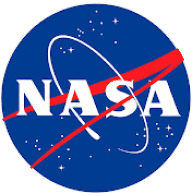JPL and the Space Age: Saving Galileo
NASA Jet Propulsion Laboratory・38 minutes read
Galileo, NASA's most problem-plagued interplanetary project, faced hardware issues and antenna failures but was saved by a dedicated team that found innovative solutions, conducted remote telesurgery, and made heroic efforts to salvage the spacecraft. Despite challenges, Galileo orbited Jupiter, captured historic events like comet impacts, and carried a probe to study Jupiter's atmosphere, leaving a lasting legacy of groundbreaking discoveries.
Insights
- Galileo faced numerous challenges during its mission to Jupiter, including hardware problems, trajectory issues, and antenna failures, but the team's resilience and innovative solutions allowed them to overcome these obstacles and achieve success.
- The Galileo mission not only resulted in groundbreaking discoveries about Jupiter and its moons but also showcased the remarkable dedication and teamwork of the individuals involved, highlighting the importance of perseverance and collaboration in the face of adversity.
Get key ideas from YouTube videos. It’s free
Recent questions
How do you make classic spaghetti carbonara?
To make classic spaghetti carbonara, start by boiling 400g of spaghetti until it is al dente. In a separate pan, fry 200g of pancetta until it is crispy. In a bowl, whisk together 4 eggs with 100g of grated Pecorino Romano cheese. Once the spaghetti is cooked, drain it and add it to the pan with the pancetta. Then, mix in the egg and cheese mixture. Serve the spaghetti carbonara immediately with extra cheese and black pepper for a delicious and satisfying meal.
What challenges did the Galileo spacecraft face?
The Galileo spacecraft faced a multitude of challenges during its mission. These challenges included hardware problems, trajectory issues, anomalies in flight, and a high gain antenna failure. The team behind the spacecraft also had to deal with adversity, fears of radiation exposure, and the constant threat of spacecraft failure. Despite these obstacles, the team came together and made heroic efforts to salvage the mission, even conducting remote telesurgery from 500 million miles away to keep the spacecraft operational.
What was the significance of Galileo's mission?
Galileo was the first spacecraft to orbit Jupiter, making it a groundbreaking mission in the exploration of the solar system. Despite facing numerous challenges, including protests over carrying plutonium onboard and budget cuts following the Challenger disaster, Galileo managed to capture the first global portrait of Earth in motion during its flyby. The spacecraft also witnessed historic events such as fragments of a comet colliding with Jupiter, providing valuable data on the force of the collisions and their aftermath. Galileo's legacy includes groundbreaking discoveries about Jupiter and its moons, showcasing the dedication and endurance of its team.
How did the team behind Galileo overcome challenges?
The team behind the Galileo spacecraft faced numerous challenges throughout its mission, including a crisis when the main antenna failed to deploy. Despite these obstacles, the team found innovative solutions to keep the spacecraft operational. They underwent a software transformation from a distance of 400 million miles, transmitted data using a less powerful low gain antenna and a reel-to-reel recorder, and even attempted various methods to fix the antenna, including software solutions. Through humor, camaraderie, and a will-do attitude, the team worked together to overcome challenges and ensure the success of the mission.
What was the final mission of the Galileo spacecraft?
The final mission of the Galileo spacecraft involved a collision with Jupiter to prevent contamination of Europa, one of Jupiter's moons. This decision was made to ensure that any potential life on Europa would not be affected by Earthly contaminants. Despite facing challenges throughout its mission, including hardware problems and antenna failures, Galileo's legacy includes groundbreaking discoveries about Jupiter and its moons. The spacecraft's endurance and the dedication of its team are part of its remarkable story, leaving a lasting impact on the exploration of the solar system.
Related videos

Fraser Cain
3000 Years Old Star Map // Lunar Starship Elevator Test // Io Close Flyby

Learn Bright
Galileo Galilei for Kids | Learn about this famous scientist and mathematician

Bloomberg Originals
Seeing The Universe Like We've Never Seen It Before

ColdFusion
Three Men Lost in Space – The Apollo 13 Disaster

V101 SPACE
The Closest Images Ever Taken of Jupiter in 4K
Summary
00:00
Classic Spaghetti Carbonara Recipe
- Recipe for classic spaghetti carbonara
- Boil 400g spaghetti until al dente
- Fry 200g pancetta until crispy
- Whisk 4 eggs with 100g grated Pecorino Romano cheese
- Drain spaghetti, add to pancetta, then mix in egg mixture
- Serve immediately with extra cheese and black pepper
00:00
Galileo: Triumph Amid Interplanetary Challenges
- Galileo was the most problem-plagued interplanetary project ever.
- The spacecraft faced hardware problems, trajectory issues, anomalies in flight, and a high gain antenna failure.
- The team faced adversity and fears of radiation exposure and spacecraft failure.
- Despite challenges, the team came together and made heroic efforts to salvage Galileo.
- Remote telesurgery was conducted from 500 million miles away.
- The team had a will-do attitude and found innovative solutions to make the spacecraft work.
- An armada of NASA spacecraft was exploring the solar system in the late 1980s.
- Galileo was the first spacecraft to orbit Jupiter and faced numerous challenges.
- Galileo barely survived budget cuts and was mothballed after the Challenger disaster.
- The spacecraft faced protests over carrying plutonium onboard.
- Galileo had to be deployed from the shuttle, which posed challenges.
- The spacecraft had to navigate a gravity assist at Venus and Earth to reach Jupiter.
- Galileo faced a crisis when its main antenna failed to deploy.
- The team tried various methods to fix the antenna, including software solutions.
- Galileo underwent a software transformation from a distance of 400 million miles.
- Data was transmitted using a less powerful low gain antenna and a reel-to-reel recorder.
- The team faced challenges but worked together to keep Galileo operational.
- The team found ways to cope with challenges through humor and camaraderie.
- Galileo captured the first global portrait of Earth in motion during its flyby.
- The spacecraft encountered an asteroid and faced challenges with its main antenna.
- Galileo witnessed fragments of a comet colliding with Jupiter, a historic event.
- The spacecraft successfully captured images of the comet impacts on Jupiter.
- Galileo's images helped determine the force of the collisions and their aftermath.
- A probe designed by NASA's Ames Research Center was carried by Galileo.
- The probe was designed to separate from Galileo and study Jupiter's atmosphere.
- The probe's descent into Jupiter's atmosphere was a high-risk mission.
- The probe aimed to determine Jupiter's chemical makeup and atmospheric conditions.
- The probe's descent would provide unprecedented data on Jupiter's atmosphere.
- Galileo's final mission involved a collision with Jupiter to prevent contamination of Europa.
- The spacecraft's legacy includes groundbreaking discoveries about Jupiter and its moons.
- Galileo's endurance and the dedication of its team are part of its remarkable story.
- The mission's impact goes beyond the spacecraft itself, leaving a lasting legacy.




